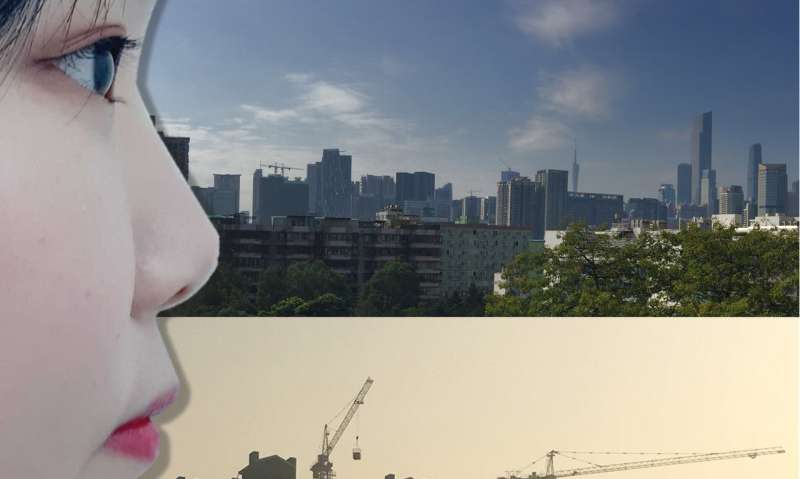March 8, 2018 report
A possible explanation for why skin diseases are more prevalent in megacities

A team of researchers from several institutions in South Korea has found a possible explanation for higher rates of skin diseases in megacities. In their paper published on the open access site Science Advances, the researchers describe their study of the skin microbiome of people living in extremely large cities versus those living in smaller cities, and what they found.
Prior research has shown that skin disease rates are higher in very large cities than they are in smaller cities or in rural communities. While it might be easy to assume that such factors as air pollution play a role, it is not clear how such factors might actually lead to skin diseases such as dermatitis. In this new effort, the researchers conducted a study focused on the skin microbiome—the mass of microorganisms that live in or on the skin—to see if there might be differences depending on city size. Prior research has shown that the skin microbiome plays a major role in defending against skin diseases.
The study consisted of taking skin swabs from 231 female volunteers who lived in one of five Chinese cities. Three of the cities were considered to be large while the other two were described as megacities. The researchers then conducted rRNA gene application sequencing on the microorganisms they found in the samples.
The researchers found that 90 percent of the microorganisms fit into just four phyla, and that there were clear differences in the skin microbiomes of women living in the megacities versus those living in cities that were deemed simply large. The most noticeable difference was variation in the composition of the biome—there was less microbial variation for the women living in the megacities. But the team also found that the microbiome of the women in the megacities was also more niche-based; worse, the microbial network was more fragile due to its lower density. It was this last finding that led the researchers to conclude that the reason for higher rates of skin diseases in megacities is likely a less robust skin microbiome. They further suggest that it might be possible to create skin creams to overcome the problem.
More information: Hye-Jin Kim et al. Fragile skin microbiomes in megacities are assembled by a predominantly niche-based process, Science Advances (2018). DOI: 10.1126/sciadv.1701581
Abstract
Given the higher incidence of skin diseases in more urbanized populations and its association with the skin microbiome, we questioned how the skin microbiome differed depending on the degree of urbanization. Skin microbiomes of 231 healthy subjects in five large cities in China varied mainly with environment and socioeconomic status of the cities in question. The differences among microbiomes could be explained by the predominantly niche-based assembly of microbial communities, which was supported by a dominance test, β-null deviation, and edge-length abundance distribution. Networks among microbes in larger cities were more fragile, which may contribute to the higher incidence of skin diseases in more urbanized environments. These results suggest that microbial ecological theory can provide a framework for understanding crucial health-associated features of the human microbiome.
© 2018 Phys.org

















